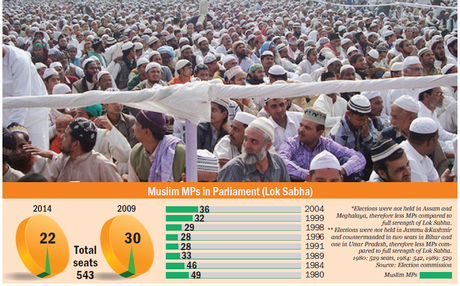Nooses are Strangling the Future of the World

In January last year, Rohith Vemula, a research scholar in Hyderabad University sparked a furious controversy when he committed suicide for some ambiguous reasons. The last note of his life that he left, reads “I am not hurt at this moment. I am not sad. I am just empty. Unconcerned about myself. That’s pathetic. And that’s why I am doing this.” Unlike the majority of the cases where the suicide victims are depressed over social or mental reasons, the 26-year-old Rohith Vemula’s death was initially proclaimed as an “institutional murder” by some political leaders to target the ruling party when it was alleged in the media that Rohith was a Dalit who became a victim of caste oppression at the hands of the university administration. However, recently the enquiry commission set up to probe into the case declared that Rohith was not a Dalit and there was no external pressure on him. But at the same time, it has found that Rohith was suffering from frustration, loneliness and similar intrapersonal reasons. This raises a serious question as to why students develop suicidal thoughts and what compels them to think of no option other than committing suicide.
Statistics
Amongst the eight lakh suicides committed each year worldwide, about 17%, that is, about 1,35,000 are committed in India. In India, the Registrar General is vested with the responsibility to conduct census and surveys including that of mortality rates. It has been found that 45% of suicides in men and 56% of suicides in women are committed by the youths between the age group of 15 to 29 years. In 2015 alone, 8,934 students had reportedly ended their life.
Definition
The Oxford dictionary defines suicide as “The action of killing oneself intentionally.” However, the Indian codified law is much more specific about the definition. It considers a death as suicide if it meets the three prerequisites – the death should be unnatural, there must be an intention to do so and the person should have a reason behind, whether specified in a note or unspecified. Unless all three conditions are proven to have existed in the deceased, the death is not considered as suicide.
Astonishing Data
There is actually nothing which is normal enough to not sound peculiar about suicides. The voluntary surrendering of life is in itself an astonishing thing to think about.
Besides the fact that majority of suicides are committed by people less than 30 years of age, following is a compilation of some of the most strange facts about the suicide rate in India:
1) The most common reason behind suicides in India is family conflicts and related problems, followed by illness.
2) The percentage of men committing suicide under the influence of alcohol is shockingly between 30 to 50%
3) Hanging is the most common method of suicide in India constituting 38% suicides, followed by poisoning (33%)
4) Very surprisingly, a majority of the people who commit suicide are literate. The percentage of literates in the list of suicide-doers is startlingly 80%
Why Youths Relinquish Life
The most common reason behind the development of suicidal tendencies in Indian youth, as we have seen in the case of Rohith Vemula, is mental illness. Students face a series of mental aggression, anxiety for success in exams, depression, unemployment issues, failure of relationships and great distress over unfulfilled social ambitiousness. The New York Times reported in 2014 that the new policies could not be very effective in India, following a 20% cut in the health budget.
Traumatic social experiences like sexual abuse and bullying tremble the mind by causing the victim feel hopeless, humiliated and detached from the world. Ragging, until a few years back, was one of the biggest causes triggering the thoughts of suicide. Drug addiction profoundly corrupts the consciousness of a person and can even lead him to kill himself. According to the recent data released by National Crime Records Bureau, there have been 3,647 suicides endorsed by drugs in India last year, out of which Maharastra recorded the highest number with 1,372 such cases. Since it has been arguably established that suicide is an outcome of extreme mental and social problems, the Government is again giving thoughts to repeal the Section 309 of the Indian Penal Code, which considers suicides as a crime. Nevertheless, the government ought to consider other strategies and plans to curb the high suicide rates.
Suicide Prevention
A number of NGOs are working tirelessly to prevent further suicides and minimise its high rate. These NGOs like Sumaitri (Delhi’s oldest), Sneha India and AASRA (the most popular in India) have a number of hotlines where a person feeling despair can call to have a one-to-one communication with any of its members. The persons appointed are generally from psychology background or have a great mentoring competence. Apart from advising the person, they also pay a visit to him or her if they further feel it essential.
Reduction of social detachment and disintegration is another major strategy to restrain suicides. As aforementioned that in the case of egoistic suicide, the more secluded one finds himself in society, the more is his probability of developing suicidal tendencies. This can be checked and averted by increasing the social integration by engaging oneself in community clubs and other social gatherings. One can join a local sports team or associate himself as a part of an association that needs him and his contribution. This will help the person quench his need for affiliation, thereby boosting his confidence and creating a healthy atmosphere of belongingness within the team or group.
Measures can be taken to reasonably constrain the use of objects used for committing suicide. With this intention, Kota, which had turned into the ‘suicide hub’ from the ‘coaching hub’, came up with an innovative plan. The tragedy of Kriti Tripathi, the girl who cleared IIT Mains but committed suicide as she did not want to an engineer, is still limpid in people’s mind. The National Crime Record Bureau (NCRB) also declared in 2014 that fear of exams alone took at least 45 lives a year in Kota. Therefore, at the end of March 2017, hostels in Kota replaced the ordinary ceiling fans with spring-fitted fans that would automatically swing down if any student attempts to hang himself. According to World Health Organisation (WHO), self-poisoning is the second most commonly used method for suicide (after hanging), constituting up to 20% of the total suicides worldwide. Many scientists around the world are of the view that ban of dangerous pesticides can effectively reduce the rate of suicides.
Last, but not the least, we should learn to comprehend and read the signs of suicidal tendencies in our fellow companions, in order to prevent them from ending their lives. The most common signs of such perilous tendencies include a hopelessly sullen face, loss of energy and interest in performing any act, rapid change in eating habits and disregard of personal hygiene and looks. The person would often engage in talking about the futility of life, ending life or death, hefty mood swings and disproportionate furiousness.




